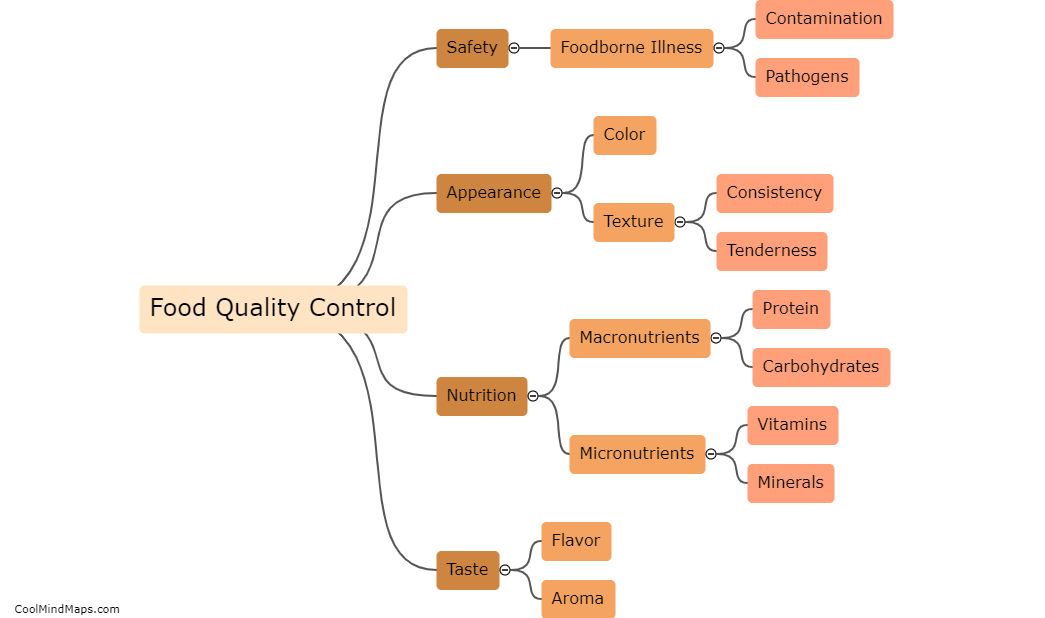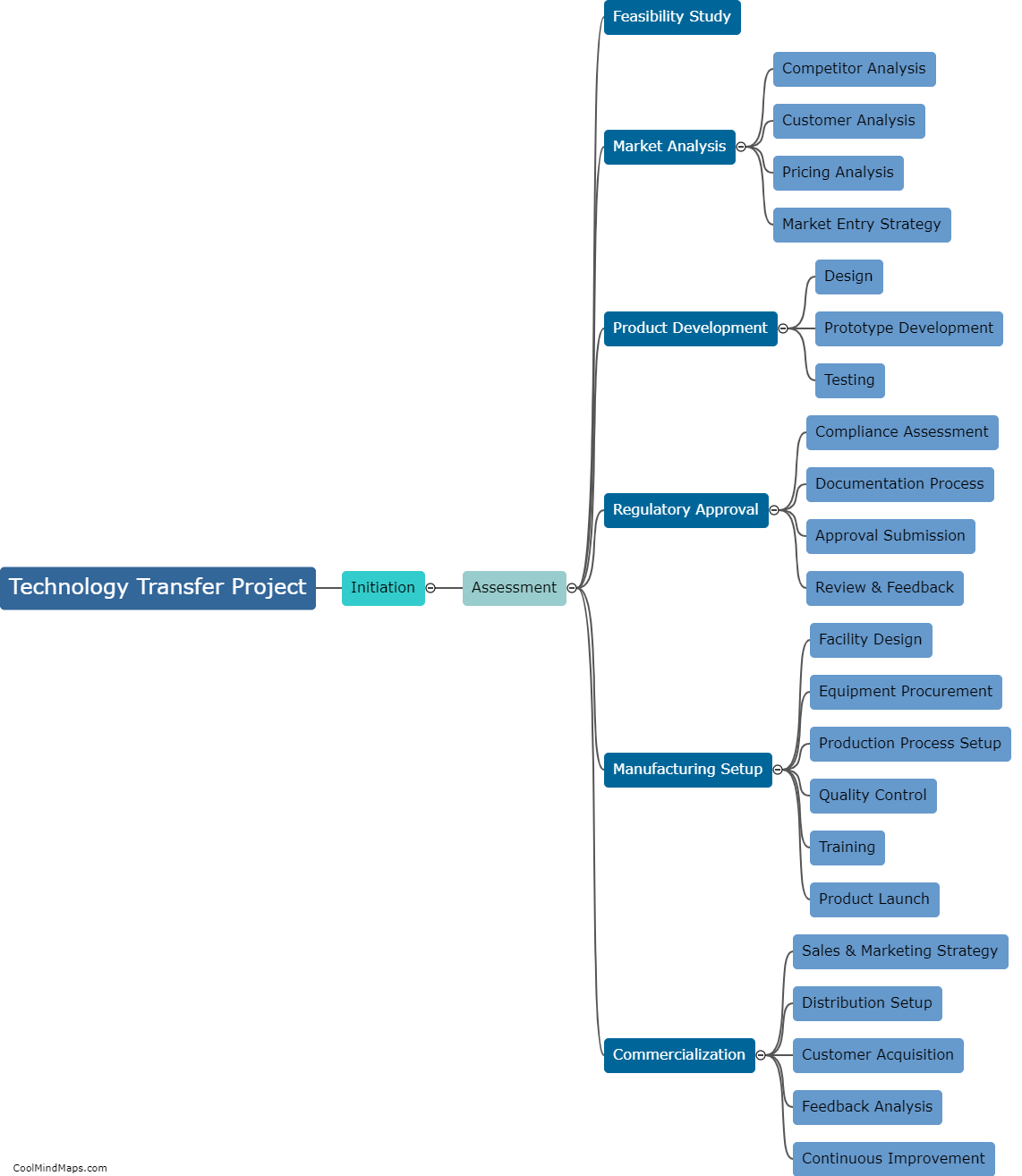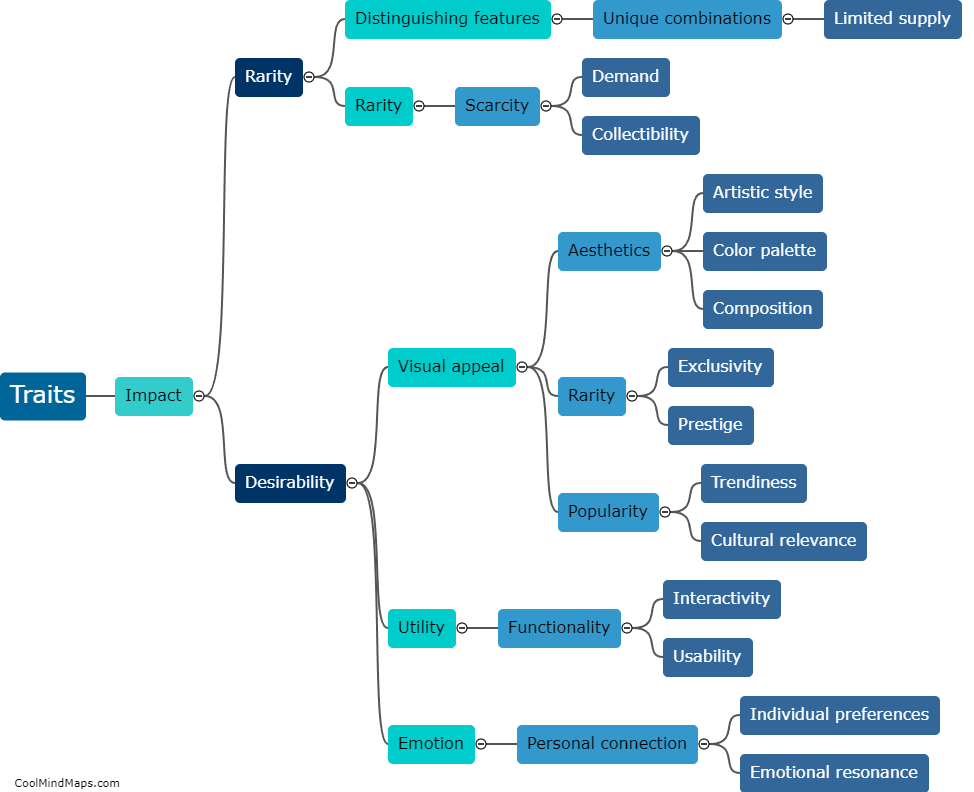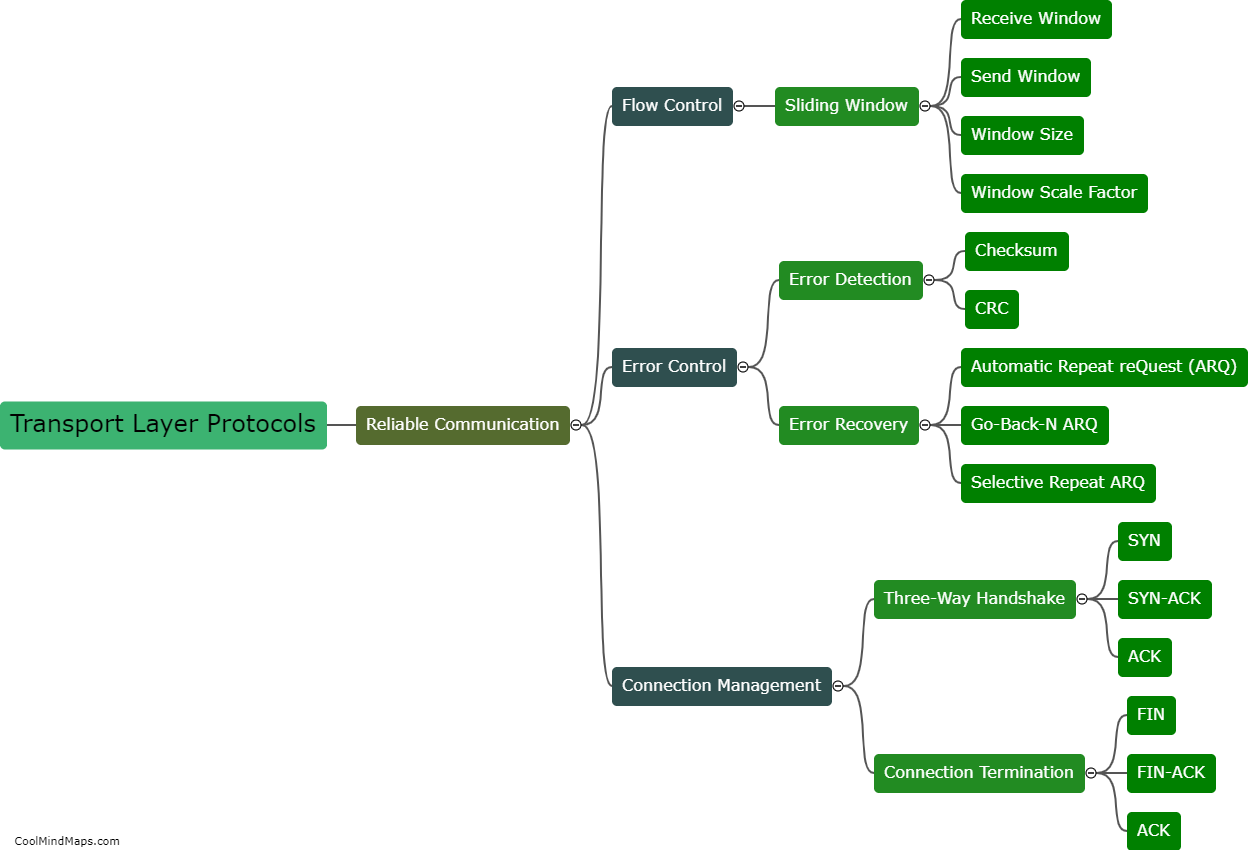What are the key features of transport layer protocols?
Transport layer protocols are responsible for establishing connections, exchanging data, and ensuring reliable delivery of packets in a network. Some of the key features of transport layer protocols include flow control, error detection and correction, multiplexing and demultiplexing, and congestion control. Flow control enables the receiver to control the rate of data transmission to prevent overwhelming the receiver. Error detection and correction mechanisms, such as checksums and acknowledgments, ensure the data's integrity. Multiplexing and demultiplexing help in managing multiple data streams within a single connection. Lastly, congestion control algorithms are employed to manage network congestion and prevent network overload, thus ensuring optimal performance.
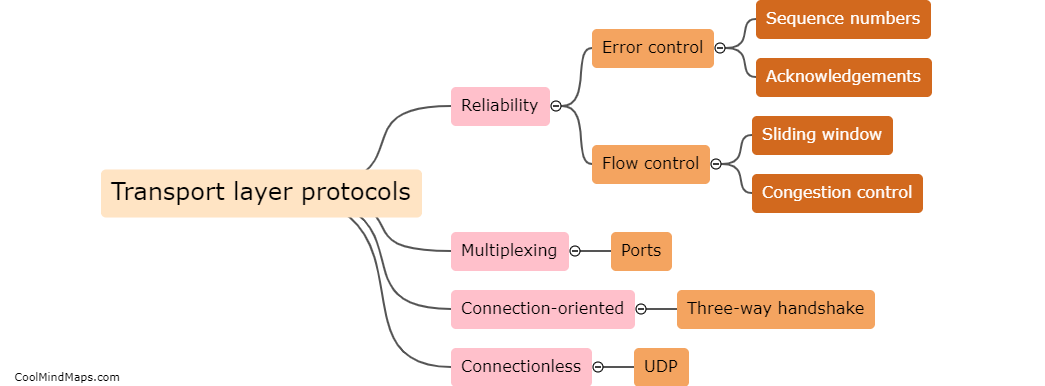
This mind map was published on 19 August 2023 and has been viewed 89 times.


